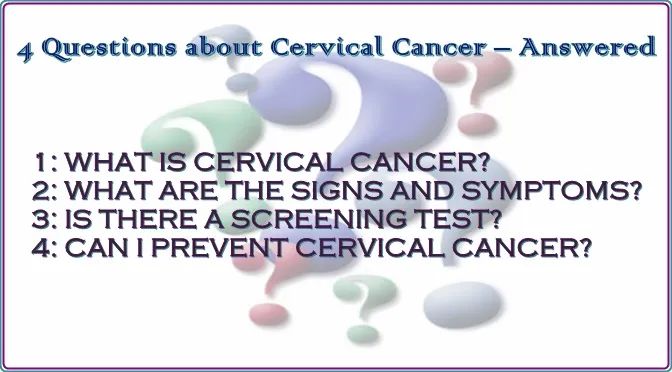
4 Questions about Cervical Cancer – Answered
4 Questions about Cervical Cancer – AnsweredBy: Dr. Chad Abbey, Billings OB-GYN Associates
1: WHAT IS CERVICAL CANCER?
A woman’s cervix (the lower part of the uterus at the top of the vagina) is covered with a thin layer of tissue. When this tissue is healthy, it is made of cells that grow, divide and are replaced as needed. Cancer of the cervix occurs when these cells grow and divide abnormally. They may grow deeply into the cervix or spread to other organs. Eventually, cancer cells will form a mass called a tumor.
Cervical cancer carries with it a very good 5-year survival rate when found early. The 5-year survival rate is the percentage of women who survive at least five years after the cancer is found and treated. When found in the earliest stage, stage 1, there is a 93% survival rate at 5 years. Contrasted with finding the cancer in the late stage, stage 4, when the 5-year survival rate plummets to only 16%.
2: WHAT ARE THE SIGNS AND SYMPTOMS?
In most cases, the signs and symptoms of cervical cancer do not appear until the cancer is at an advanced stage and has already spread to other tissues and organs. However, there are some signs that may present early:
- Abnormal bleeding, spotting between menstrual periods
- Heavier than usual menstrual bleeding
- Watery vaginal discharge
- Bleeding after sex
Signs of advanced cancer can include:
- Pelvic pain
- Problems urinating
- Swollen legs
If these symptoms appear, it is important to talk with your health care provider.
3: IS THERE A SCREENING TEST?
Yes. The PAP test, when done at regular intervals, checks for cell change on the cervix and allows for early detection of abnormalities. Fortunately, cervical cancer generally takes years to develop. During this time the cells of the cervix will go through precancerous changes called cervical dysplasia. The PAP test is designed to detect these precancerous changes so that early treatment can be initiated prior to cervical cancer developing.
An HPV (Human Papilloma Virus) test is also available. It is used along with the PAP test to screen for cervical cancer in some women and as a follow-up test when a woman has an abnormal PAP test result.
4: CAN I PREVENT CERVICAL CANCER?
Most cases of cervical cancer occur in women who either never had a PAP test or went a very long time between routine PAP tests. Estimates suggest that 50% of the women in whom cervical cancer is diagnosed never had a PAP test and another 10% had not had a PAP test within the 5 years before diagnosis.
The number one factor that can make a difference in developing cervical cancer is not catching precancerous changes before they become cancer. The PAP test is the most reliable and effective cancer screening method available and women should have yearly wellness exams with their OB/GYN.
The most important risk factor for cervical cancer development is infection with certain types of HPV linked with cancer. The following factors increase the risk of becoming infected with HPV:
- Multiple sexual partners
- Unprotected sex
- Male partner who has had multiple sexual partners
- Early age at starting sexual activity (age less than 18)
Additional risk factors that contribute to development of cervical cancer include:
- Smoking
- A personal history of dysplasia of the cervix, vagina or vulva
- A family history of cervical cancer
- Certain sexually transmitted infections, such as chlamydia or HIV
- Problems with the immune system
To learn more, ask your physician about how you can protect yourself and your family from cervical cancer or contact Billings OB-GYN Associates at billings-obgyn.com.
About the author...Chad completed his undergraduate studies at Stetson University and earned his medical degree from the West Virginia School of Osteopathic Medicine. He completed his residency in Obstetrics and Gynecology at the San Antonio Uniformed Services Health Education Consortium in San Antonio, Texas. Dr. Abbey joined Billings OB-GYN Associates in July, 2015.
Dr. Abbey was born and raised in Billings. He and his wife Michelle have two children. After a long military career, Dr. Abbey is excited to return to Montana. He enjoys spending time with his family, traveling and outdoor activities especially fishing with his two sons.
